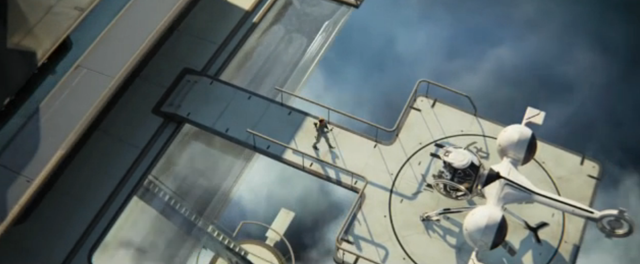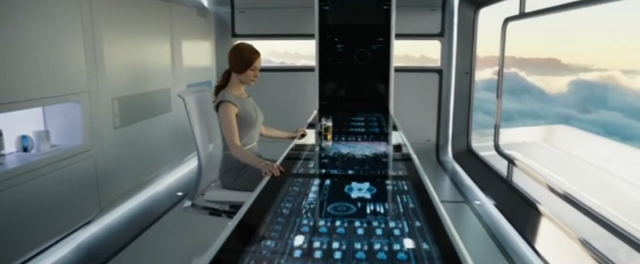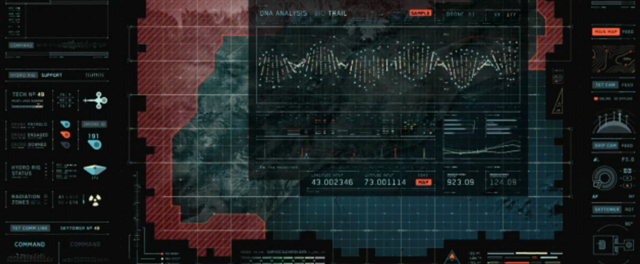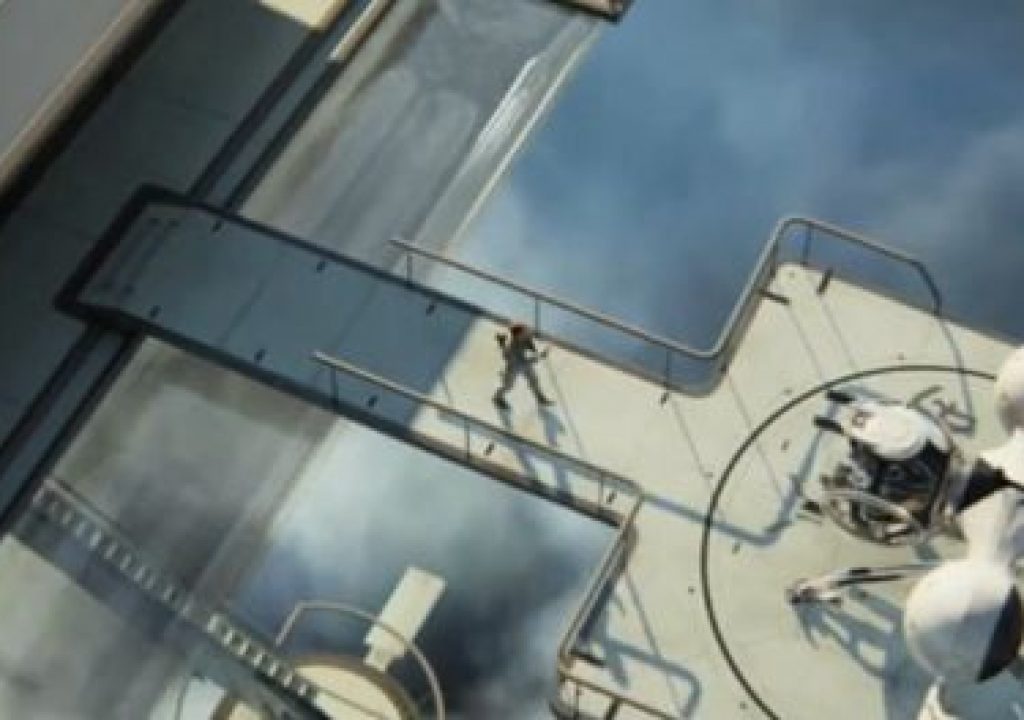This is the first in our series of blog posts highlighting the amazing work done by some of the industry’s best VFX artists using Adobe After Effects in a few of this summer's blockbusters.
When you want great visual effects for your latest futuristic film, you need to hire a great team. That’s exactly what Joseph Kosinski did for his latest film, Oblivion, starring Tom Cruise as a drone repairman working on an uninhabitable future Earth. Kosinski turned to Bradley G. Munkowitz (GMUNK), who he’d previously worked with on Tron Legacy. As lead interface graphic designer, GMUNK then pulled a team together that included Interface Graphic Designers Joseph Chan (Chanimal) and Jake Sargeant, and Interface Animators Alexander Perry (AP), Navarro Parker (Nav), and David Lewandowski (D‐Lew). They were happy to reunite to share how much fun they had creating the 2D effects for the film using an Adobe workflow.

Adobe: What was your vision as design director? How did you become involved?
GMUNK: I had a prior relationship with Joe Kosinski because we worked together at Digital Domain doing some TV commercials for HUMMER. Then I did all the holograms for Tron Legacy. I’ve been a graphic artist for more than 12 years, and Joe respects my work. So when he asked if I was interested in Oblivion, there was no question in my mind.
Adobe: How did the rest of the design and animation group come together?
GMUNK: I actually met Alex (AP) at a party and I knew he was fantastic at animating interfaces. Then we brought on Chanimal and Nav, some of the most amazing animators we’d ever known. Nav has been creating futuristic user interfaces (FUIs) for at least seven years, and Chanimal has a similar level of artistry and experience. This was such a unique gig because we actually assembled our little band together in Culver City right in Joe’s office, so we were sitting next to this famous director and his personal assistant. Every day felt like play, not work. And as design director, I tried to infuse some silly fun into the project. What was great about this project was that we could sketch out and present ideas and discuss them with Joe right there. He was accessible and amenable to a lot of back and forth. It was very fun, loose, and collaborative.
Adobe: What were the first steps on the project?
GMUNK: We wanted to create a very energetic and visually stunning sci‐fi world with a clean, sharp “vector‐ish” feel to it, so for the graphic design we used Adobe Illustrator and then brought the graphics into After Effects. There were two phases of the project. We started by creating an interactive light table for the sky tower. This was a big push with a team of four doing all the concepting, designing, animating, and outputting for the live action shoot of the sky tower. I worked on this part with D‐Lew, Chanimal, and motion graphics guru Jake Sergeant.

Next, we (Nav, Alex, Chanimal, and I) started on the post graphics, which included cockpit elements for the Bubble Ship and heads‐up‐display (HUD) elements for various equipment and weapons in the film. Throughout the whole process we used Illustrator, After Effects, and a little bit of CINEMA 4D. Keep in mind that this is not really a flashy 3D movie with all kinds of holograms and crazy 3D elements. It’s meant to look timeless, minimalist, and elegant, so Illustrator, After Effects, and CINEMA 4D were perfect because they gave it the clean, 2D look we wanted. We used a little Photoshop here and there for text and some Adobe Premiere Pro just for quick playbacks.
Adobe: Alex, tell us what you contributed to the project?
AP: I did a lot of the animations that you see just once in the movie such as a reticle (a grid or pattern placed in the eyepiece of an optical instrument) locking onto a drone. I worked a lot on the little effects on the gun reticles and drone vision that was undulating and looping back and forth. Working on graphics that are supposed to look like they have a function was a fun challenge. In terms of using After Effects, I kept it pretty traditional and used only a few effects. I love animating masks and assets from Illustrator because the workflow is straightforward and the integration is great.
Adobe: Nav, how did you get involved in the project and what was your primary role?
Nav: I’ve always loved computer screens in movies. I had worked on a commercial for Sony, co‐branded with the movie Skyfall, with GMUNK and we enjoyed collaborating. I was thrilled when he asked me to join the team on Oblivion. I primarily worked on the DNA sequence, the drone vision “eyeball,” and a ton of shots for the Bubble Ship HUD. I also assisted GMUNK with a weather display sequence that is part of the deleted scenes on the Blu‐ray.

Adobe: What were some of your main challenges and how did After Effects help you overcome them?
Nav: We were working at super high resolutions, mostly 4K with a handful of shots in 8K, because the goal was to keep the micro‐fine detail absolutely crisp and beautiful. Because After Effects has the ability to infinitely scale vector layers, we were able to scale up any vector file by massive amounts without losing detail. Then we handed shots off to Pixomondo for comping everything into the shots. After Effects also helped us work quickly. The global cache feature in After Effects makes it so once everything is initially rendered, a change to one layer can be rendered out much faster.
Adobe: As you move into using Adobe Creative Cloud more, are there any features you’re especially excited about?
Nav: Specifically for me, the integration between After Effects CC and CINEMA 4D is really useful because I won’t have to be jumping back and forth between applications. I can make faster changes and refinements and have more time to creatively experiment.
Adobe: What made this project special?
GMUNK: I am not sure anything quite like this will ever happen again, where a team like this comes together and we have so much close collaboration with a director like Joe Kosinski. I heard designer Jessica Walsh speak at a conference once and she said something along the lines of, “If you treat work as play, you’ll never work another day in your life. The people you work with, the fun you have, and the sheer joy in creating takes precedence over everything.” That’s what this project was like.
Learn more about the video tools and services in Adobe Creative Cloud
Download a free trial of Adobe Creative Cloud

Filmtools
Filmmakers go-to destination for pre-production, production & post production equipment!
Shop Now













